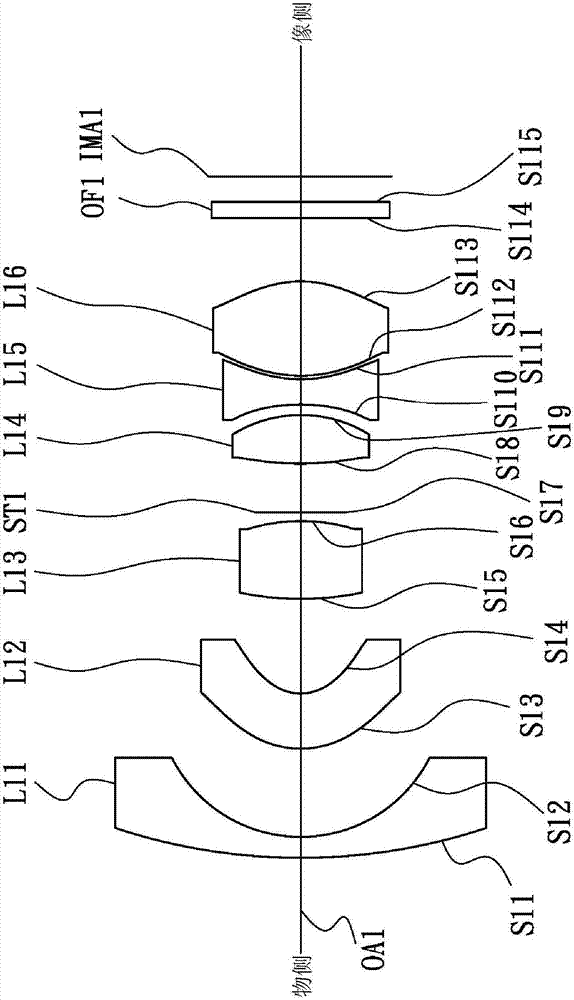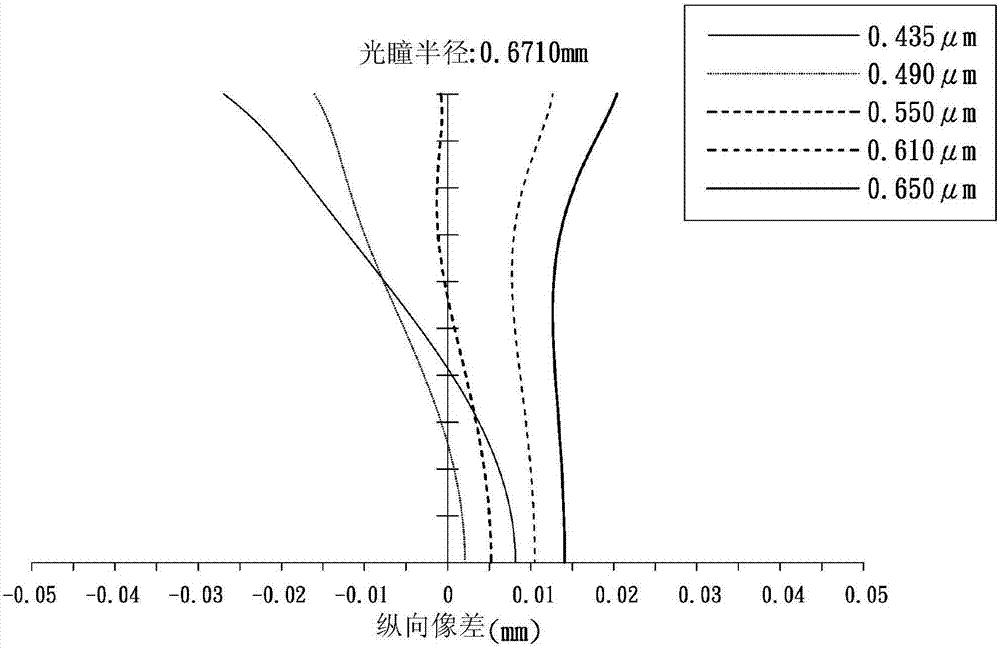Wide-angle lens
A wide-angle lens and lens technology, applied in the field of wide-angle lenses, can solve the problem that wide-angle lenses cannot have large aperture and resistance to environmental temperature changes at the same time, and achieve the effects of good optical performance, resistance to environmental temperature changes, and short overall length.
- Summary
- Abstract
- Description
- Claims
- Application Information
AI Technical Summary
Problems solved by technology
Method used
Image
Examples
Embodiment Construction
[0033] see figure 1 , figure 1 is a schematic diagram of the lens configuration of the first embodiment of the wide-angle lens according to the present invention. The wide-angle lens 1 sequentially includes a first lens L11, a second lens L12, a third lens L13, a diaphragm ST1, a fourth lens L14, a fifth lens L15, a sixth lens L16 and a filter from the object side to the image side along the optical axis OA1. Light sheet OF1. During imaging, the light from the object side is finally imaged on the imaging surface IMA1.
[0034] The first lens L11 is a crescent lens with negative refractive power and is made of glass material. The object side S11 is convex, the image side S12 is concave, and both the object side S11 and the image side S12 are spherical surfaces.
[0035] The second lens L12 is a crescent lens with negative refractive power and is made of plastic material. The object side S13 is convex, the image side S14 is concave, and both the object side S13 and the image ...
PUM
 Login to View More
Login to View More Abstract
Description
Claims
Application Information
 Login to View More
Login to View More - R&D
- Intellectual Property
- Life Sciences
- Materials
- Tech Scout
- Unparalleled Data Quality
- Higher Quality Content
- 60% Fewer Hallucinations
Browse by: Latest US Patents, China's latest patents, Technical Efficacy Thesaurus, Application Domain, Technology Topic, Popular Technical Reports.
© 2025 PatSnap. All rights reserved.Legal|Privacy policy|Modern Slavery Act Transparency Statement|Sitemap|About US| Contact US: help@patsnap.com



